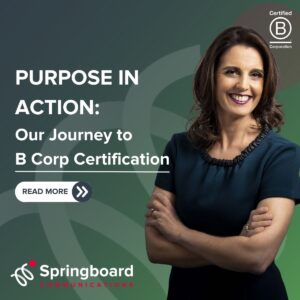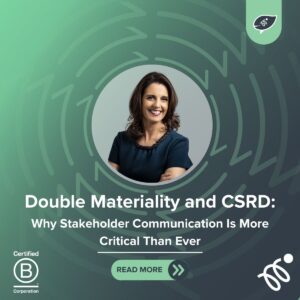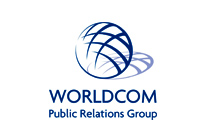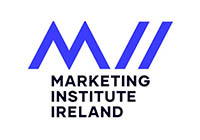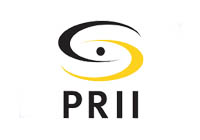
By Susie Horgan, Founder and Managing Director of Springboard Communications. Previously published by Ibec in their April ‘Engage’ e-zine.
Communicating Sustainability: Winning Hearts and Minds
The Corporate Sustainability Reporting Directive (CSRD) is reshaping how businesses report on their sustainability commitments. However, with potential CSRD shifts creating uncertainty, companies must work harder to sustain engagement and avoid sustainability fatigue. Effective communication is key to ensuring that stakeholders remain engaged, trust is built, and long-term sustainability goals stay on track.
At the recent IBEC webinar, CSRD – From Strategy to Implementation, I had the opportunity to share insights on why sustainability communication is a business imperative, not just a regulatory requirement.
Avoiding the Pitfalls: Greenwashing vs. Greenhushing
One of the biggest risks companies face is getting sustainability communications wrong. The European Commission found that 53% of environmental claims were misleading or unsubstantiated. With increasing scrutiny, companies must balance ambition with credibility.
We explored two key challenges:
- Greenwashing: Overstating sustainability efforts can lead to reputational damage, regulatory scrutiny, and even litigation.
- Greenhushing: More and more companies, fearful of getting it wrong, choose to say nothing at all—missing out on key opportunities to engage employees, investors, and customers.
The key takeaway? Transparency is everything. Companies need to be upfront about their progress, challenges, and long-term ambitions. Consumers and employees want to work for and buy from sustainable brands—but if you don’t communicate effectively, they won’t know your efforts.
Silence is not the solution.
Why CSRD Communication is a Business Opportunity
Communicating sustainability well is not just about compliance—it’s about securing competitive advantage.
When done effectively, sustainability communication builds investor confidence and employee engagement, strengthening stakeholder relationships and long-term business resilience.
Companies that embed sustainability into their brand narrative are more likely to retain talent, attract investment, and build resilience.
Effective communication is not just about mitigating risks—it’s about amplifying opportunities. Research shows that:
- 80% of consumers are willing to spend an average of 9.7% more on sustainably produced or sourced goods, even amid cost-of-living and inflationary concerns (PwC 2024 Voice of the Consumer Survey).
- 67% of employees say sustainability commitments increase their loyalty to their employer (Bain & Company).
- Companies that actively communicate their sustainability efforts see a 10-15% increase in sales (Unilever).
For businesses, this means that getting sustainability communication right can enhance brand reputation, strengthen stakeholder relationships, and drive long-term growth. So how can businesses ensure their sustainability communications are strategic, impactful, and credible? That’s where our Sustainability Decoder framework comes in.
A Framework for Effective Sustainability Communication
At Springboard Communications, we use our Sustainability Decoder framework to help companies develop a clear, strategic approach to sustainability messaging:
- Set Your Objectives – Establish clear objectives that align with business goals and regulatory requirements, ensuring a balance between ambition and achievability — getting it right ensures clarity, budget alignment, and measurable KPIs.
- Target Stakeholders Defined – Tailor messages for employees, investors, customers, and regulators.
- Own Your Narrative – Communicate sustainability authentically and avoid overstatement. Train leadership teams on messaging.
- Refine Your Channels – Ensure transparency by using the right mix of owned, earned, and paid media.
- Your Campaign – Execute a 360° sustainability campaign that builds credibility and engagement.
The Power of Storytelling in Sustainability Reporting
Sustainability reports can often be dense and data-heavy, making them difficult for stakeholders to engage with. That’s why storytelling matters. Instead of just listing facts and figures, companies should structure their sustainability story around:
- Challenge: What sustainability issue are you addressing?
- Action: What steps is your company taking?
- Impact: What measurable improvements have you made?
Real-world examples—such as Ørsted’s transition to renewable energy or Patagonia’s purpose-led marketing—demonstrate how companies can bring sustainability communications to life in an engaging and credible way.
Final Thoughts: Sustainability as a Continuous Journey
CSRD is not just a reporting requirement—it’s an opportunity to lead. Companies that embed sustainability into their strategy and communicate it effectively will not only comply with regulations but also build stronger, more resilient businesses.
At Springboard Communications, we work with companies to develop clear, credible, and impactful sustainability communications strategies. We work with you to ensure your sustainability story is heard.
